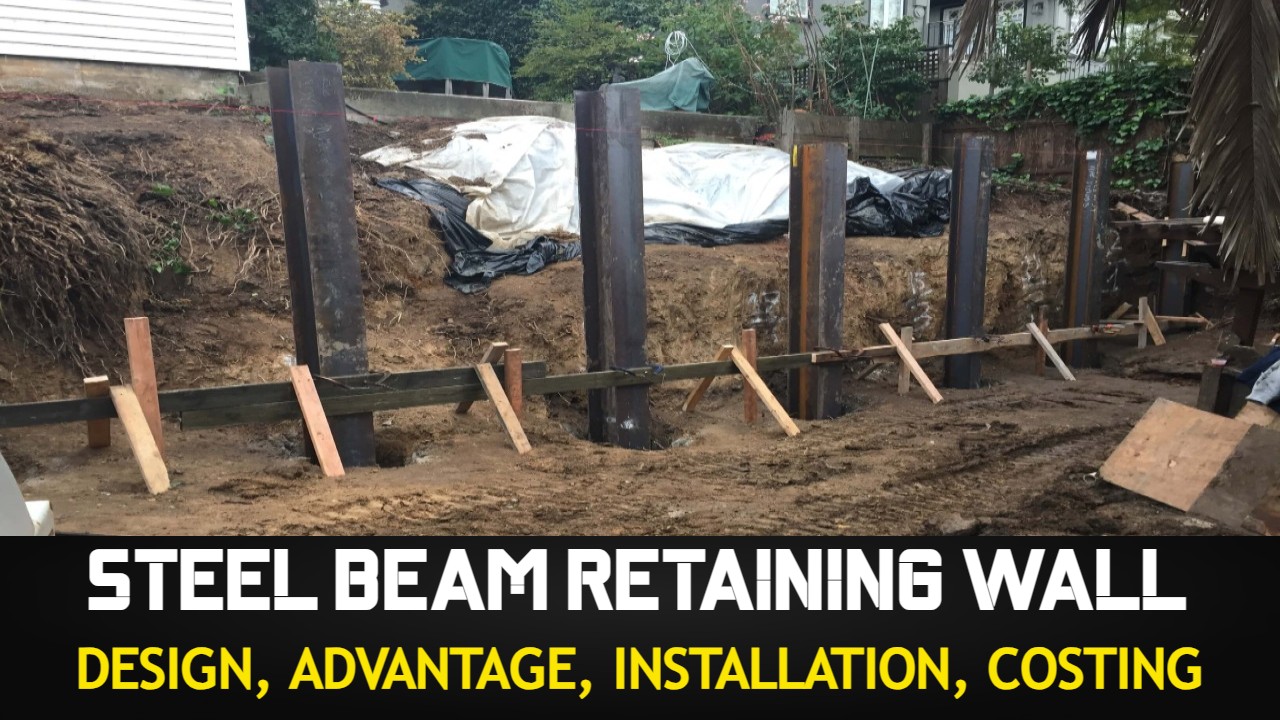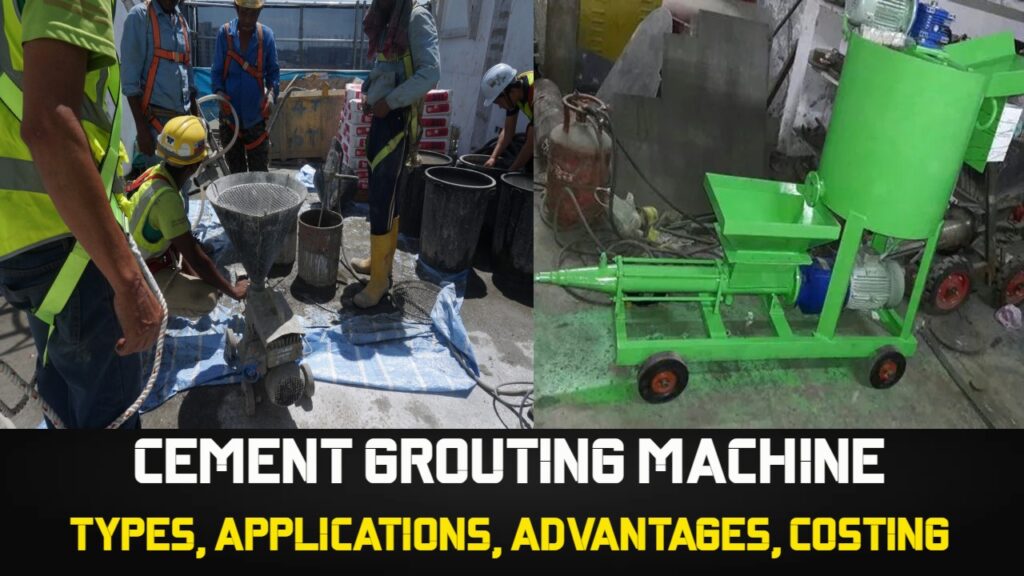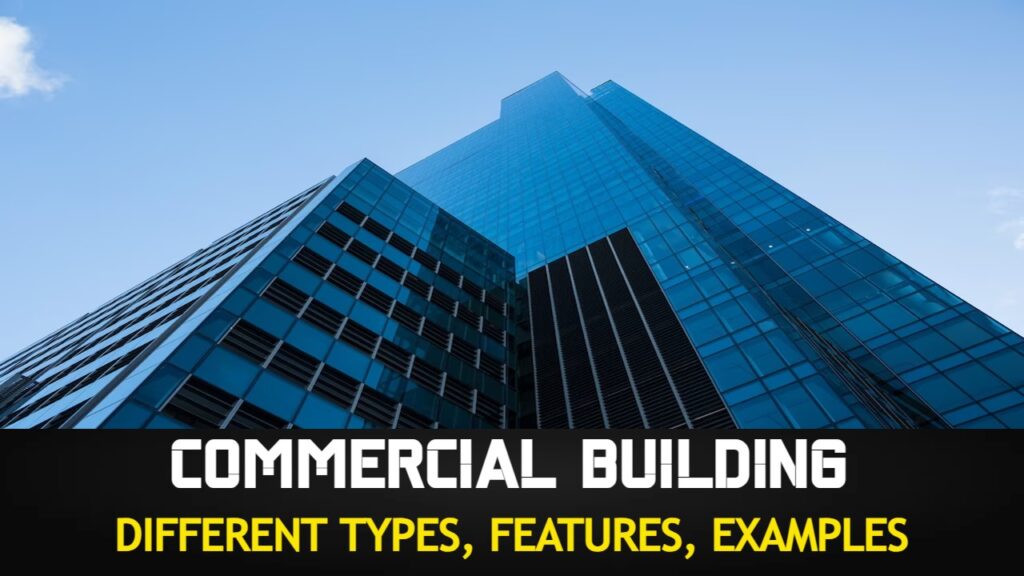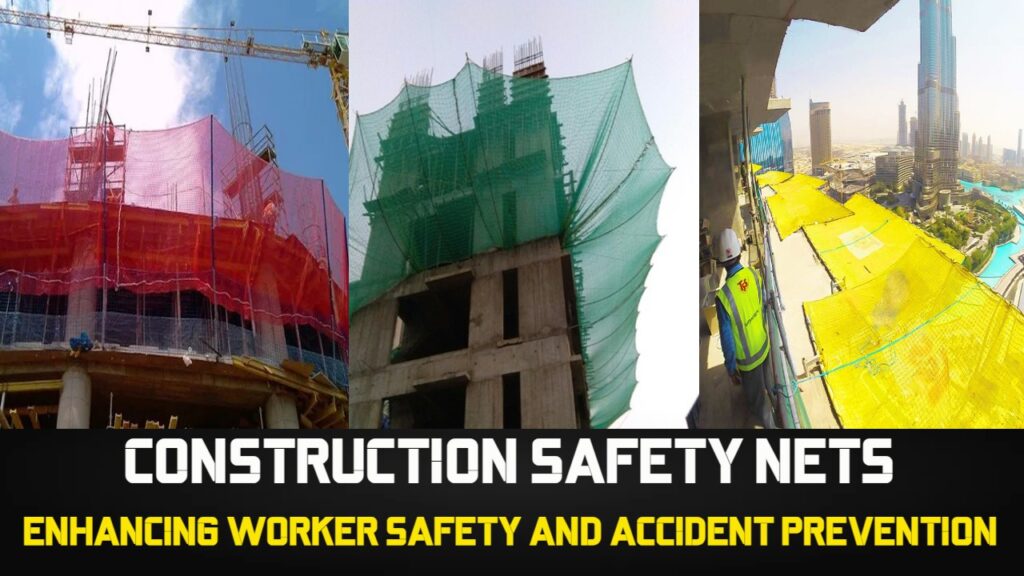Retaining walls made of steel beams are strong, long-lasting structures that give diverse building projects the crucial support and stability they need. Understanding the advantages, design factors, and installation procedure of steel beam retaining walls is essential whether you’re working on a household property or a significant infrastructure construction. The main features of steel beam retaining walls will be discussed in this article, along with their benefits, design considerations, installation procedures, maintenance requirements, longevity, comparison to other retaining wall options, environmental considerations, cost analysis, conclusion, and frequently asked questions (FAQs) about their use.
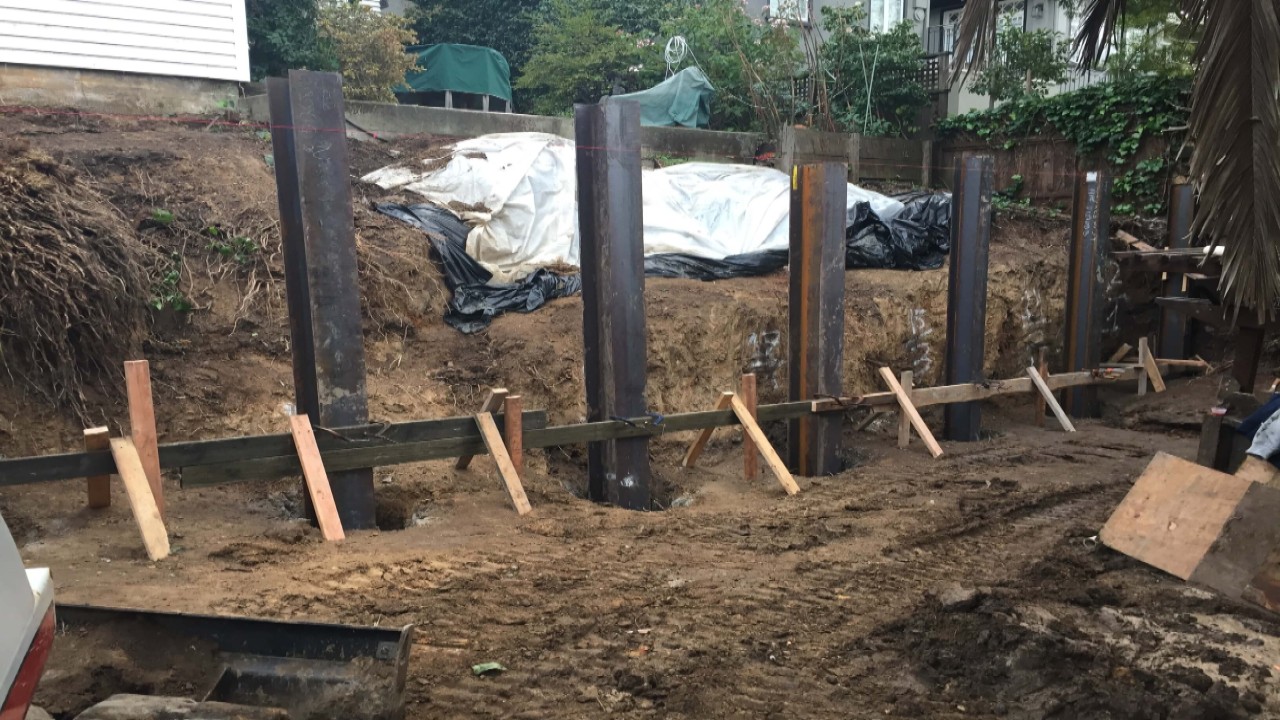
Contents
- 1 Introduction to Steel Beam Retaining Walls
- 2 Benefits of Steel Beam Retaining Walls
- 3 Design Considerations
- 4 Installation Process
- 5 Maintenance and Longevity
- 6 Comparison with Other Retaining Wall Options
- 7 Environmental Considerations
- 8 Cost Analysis
- 9 Conclusion
- 10 Frequently Asked Questions – FAQs
- 10.1 What are the advantages of steel beam retaining walls over other materials?
- 10.2 How long do steel beam retaining walls typically last?
- 10.3 Can steel beam retaining walls be used for both residential and commercial projects?
- 10.4 Are there any environmental benefits to using steel beam R Walls?
- 10.5 Do steel beam walls require specialized maintenance?
Introduction to Steel Beam Retaining Walls
Retaining walls made of steel beams are engineered constructions intended to hold back dirt, stop erosion, and sustain vertical loads. They are made up of soldier piles or H-piles, which are horizontal steel beams pushed into the ground at regular intervals. These beams are joined together by reinforced concrete panels, timber lagging, or other appropriate materials to create a strong wall that can bear significant lateral stresses.
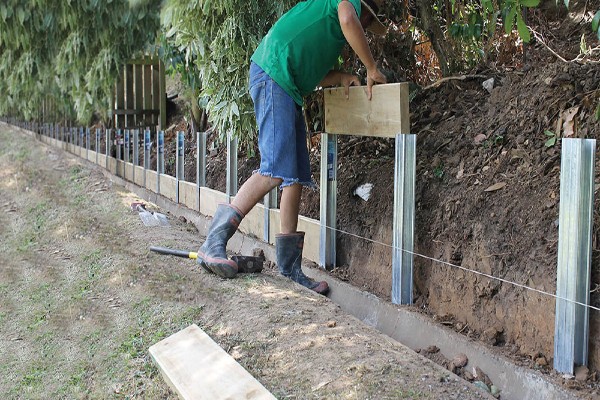
Benefits of Steel Beam Retaining Walls
Steel beam retaining walls offer several advantages compared to other retaining wall systems. Some of the key benefits include:
Strength and Durability: Retaining walls made of steel beams are renowned for being exceptionally strong and long-lasting. These walls’ steel beams offer strong support and can bear significant lateral stresses, making them appropriate for a variety of soil types and retaining wall requirements.
Versatility: Retaining walls made of steel beams may be designed and built in a variety of ways. They may be modified to work with various site constraints, such as confined areas, diverse soil characteristics, and differing wall heights. Steel beam retaining walls are flexible enough to be used in a variety of building projects.
Also Watch: How to Calculate Concrete Volume of Retaining Wall
Quick Installation: When compared to other retaining wall technologies, steel beam retaining walls may be installed rather quickly. The steel beams are installed by driving them into the ground at predetermined intervals and connecting them with the appropriate materials. This installation efficiency shortens project deadlines and lowers labour expenses.
Cost-Effectiveness: For projects with huge wall heights or difficult soil conditions, steel beam retaining walls offer a practical, affordable alternative. Steel beam retaining walls have initial expenses that may be greater than some alternative solutions, but the durability, low maintenance needs, and extended lifetime make them more cost-effective in the long run.
Minimal Maintenance: Steel beam retaining walls require little maintenance if they are erected properly. They are made to last a long time and are not prone to problems like rotting or decay, which may happen to other materials like wood. Regular inspections and maintenance checks can assist guarantee the retaining wall’s continued functionality and stability.
Structural Integrity: Retaining walls with steel beams provide good structural integrity, dependable support for soil retention, and protection against erosion. They are a reliable option for several building projects since they are made to endure heavy weights and outside influences.
Longevity: Retaining walls made of steel beams last a long time. They can survive for several decades with careful installation and upkeep, continuously supporting and stabilising the nearby soil and buildings. Construction projects get value from its durability, which also lessens the need for ongoing maintenance and replacement.
Retaining walls made of steel beams are exceptionally strong, versatile, quick to build, affordable, low maintenance, structurally sound, and long-lasting. When it comes to soil retention, preventing erosion, and maintaining the stability of building projects, they are a favoured option for engineers, contractors, and property owners due to these advantages.
Also Read: Evolution of Retaining Structures
Design Considerations
To ensure the effectiveness and structural integrity of a steel beam retaining wall, several design considerations must be taken into account:
Structural Analysis
The right size, spacing, and material requirements for the steel beams are determined by conducting a thorough structural study. During this procedure, variables including soil characteristics, water table elevations, and expected loads are taken into account.
Also Read: Foundation Types: Comprehensive Guide with Benefits and Applications
Material Selection
The precise project requirements and the anticipated soil conditions will determine which steel beams are used. Precast concrete, cold-formed steel, and hot-rolled steel are examples of materials that are often employed.
Wall Height and Load Considerations
The design is influenced by the retaining wall’s height; larger walls need more reinforcing and anchoring methods. Static and dynamic loads including seismic forces, surcharge loads, and soil pressure are all taken into account when considering loads.
Drainage System Integration
To avoid water accumulation behind the retaining wall, which might cause hydrostatic pressure and eventual failure, proper drainage is essential. The lifespan and stability of the construction are ensured by the use of a reliable drainage system.
Installation Process
The installation of a steel beam retaining wall typically involves the following steps:
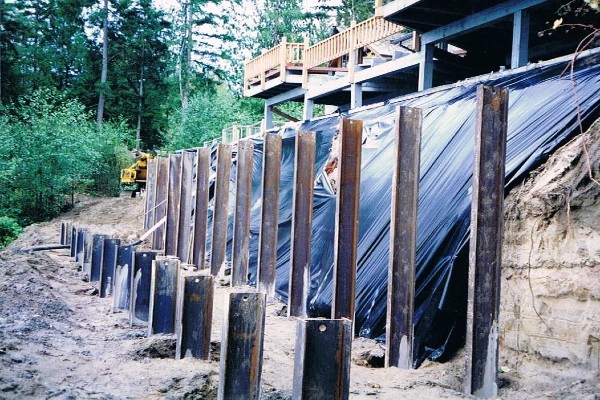
Site Preparation
Clearing and preparing the site for excavation, ensuring the area is free from any obstructions or debris.
Excavation and Foundation
Completing the necessary depth of excavation in the given area and laying a solid foundation. This could entail ground anchors or soil stabilisation methods like soil nails.
Steel Beam Placement
Installing the steel beams at the specified intervals and anchoring them securely into the ground.
Backfilling and Compaction
Backfilling the space behind the steel beams with suitable materials and compacting them to provide additional stability.
Maintenance and Longevity
For steel beam retaining walls to operate well over time and remain durable, proper maintenance is necessary. Regular inspections should be carried out to spot any indications of trouble, such cracks or movement. Controlling vegetation and regularly checking drainage systems are also essential to avoiding water-related problems.
Steel beam retaining walls offer dependable support and defence against soil erosion for many years with adequate maintenance.
Comparison with Other Retaining Wall Options
When compared to other retaining wall technologies, including concrete gravity walls, gabion walls, or wood walls, steel beam retaining walls have certain significant benefits. Steel beam retaining walls outperform other options in terms of strength, adaptability, and affordability, yet each offers advantages of their own.
Environmental Considerations
Due to its reusable nature and effective use of materials during construction, steel beam retaining walls have a little negative environmental impact. They use less natural resources than other retaining wall solutions, and they can be recycled once their useful lives are through, which further lessens their impact on the environment.
Cost Analysis
A steel beam retaining wall’s price might change based on a number of variables. When calculating the total costs of your project, it’s crucial to take these aspects into account. These are the main factors to think about:
Wall Height: The cost is heavily influenced by the height of the retaining wall. Taller walls cost more than shorter walls because they need more materials and greater reinforcing.
Site Conditions: The cost of a steel beam retaining wall can be impacted by site factors including soil stability and type. The overall costs can go up if the soil calls for considerable excavation or extra stabilisation techniques.
Design Specifications: The cost is affected by the design requirements, including the steel beams’ size and spacing. Higher costs may be associated with complex designs or customised solutions owing to the additional engineering and fabrication needs.
Materials: The cost may vary depending on the materials used for the retaining wall and steel beams. The overall costs can be affected by the type of steel used, such as hot-rolled steel or cold-formed steel, as well as any extra protective coatings.
Labor and Installation: The labor and installation costs are significant factors to consider. The complexity of the installation process, accessibility of the site, and the required equipment can affect the overall expenses.
Backfill and Drainage: It is important to take into account the price of drainage systems and backfill materials. The performance and stability of the retaining wall over the long term depend on proper backfilling and the incorporation of an effective drainage system.
It’s important to get quotations and estimates from reliable builders or engineering companies that specialise in retaining walls using steel beams. You may get precise cost evaluations that are catered to your particular needs by giving them thorough project parameters and site details.
Steel beam retaining walls may have greater starting costs than some alternative solutions, but because of their longevity and minimal maintenance needs, they offer long-term cost benefits. Steel beam retaining walls are a durable, long-lasting option for projects needing dependable soil retention and erosion avoidance due to their affordability.
It is wise to get advice from experts with knowledge of steel beam retaining walls to get accurate price quotes depending on the particular needs of your project.
Conclusion
For retaining soil and avoiding erosion in a variety of building projects, steel beam retaining walls offer a dependable and effective option. They are a preferred option for engineers and contractors because to their durability, adaptability, and affordability. You can assure the success and durability of your construction project by taking into account the design factors, installation method, maintenance requirements, and environmental effect of steel beam retaining walls.
Frequently Asked Questions – FAQs
What are the advantages of steel beam retaining walls over other materials?
Steel beam retaining walls offer exceptional strength, durability, and versatility compared to other retaining wall options. They provide cost-effective solutions for challenging soil conditions and can be quickly installed.
How long do steel beam retaining walls typically last?
With proper maintenance, steel beam retaining walls can last for several decades, providing long-term stability and support.
Can steel beam retaining walls be used for both residential and commercial projects?
Yes, steel beam retaining walls are suitable for various types of projects, including residential, commercial, and infrastructure developments.
Are there any environmental benefits to using steel beam R Walls?
Yes, steel beam R Walls have minimal environmental impact. They are reusable, require fewer natural resources, and can be recycled at the end of their lifespan.
Do steel beam walls require specialized maintenance?
Steel beam walls require routine inspections, vegetation control, and monitoring of drainage systems to ensure their long-term performance. However, they generally have low maintenance requirements compared to other retaining wall options.
